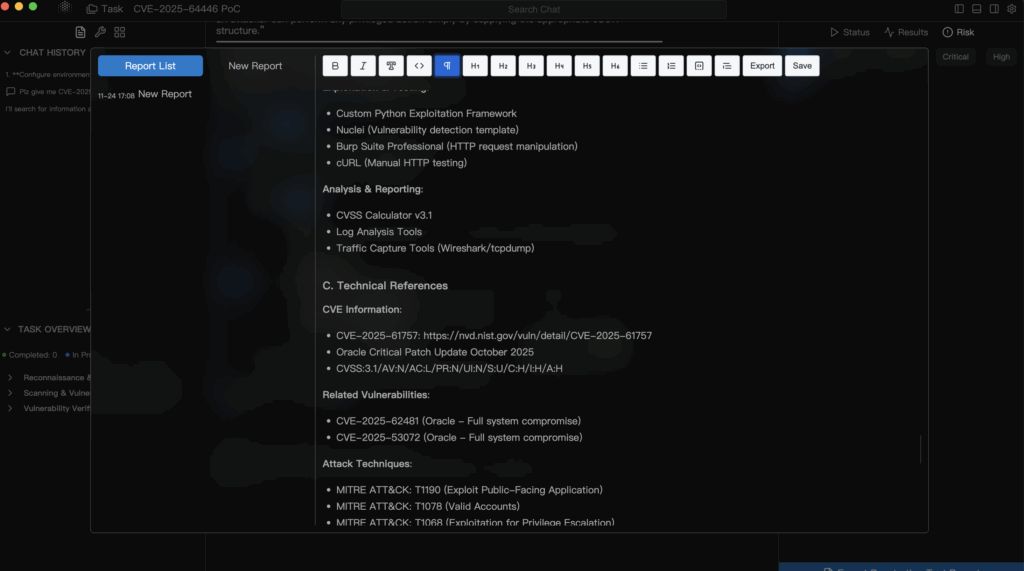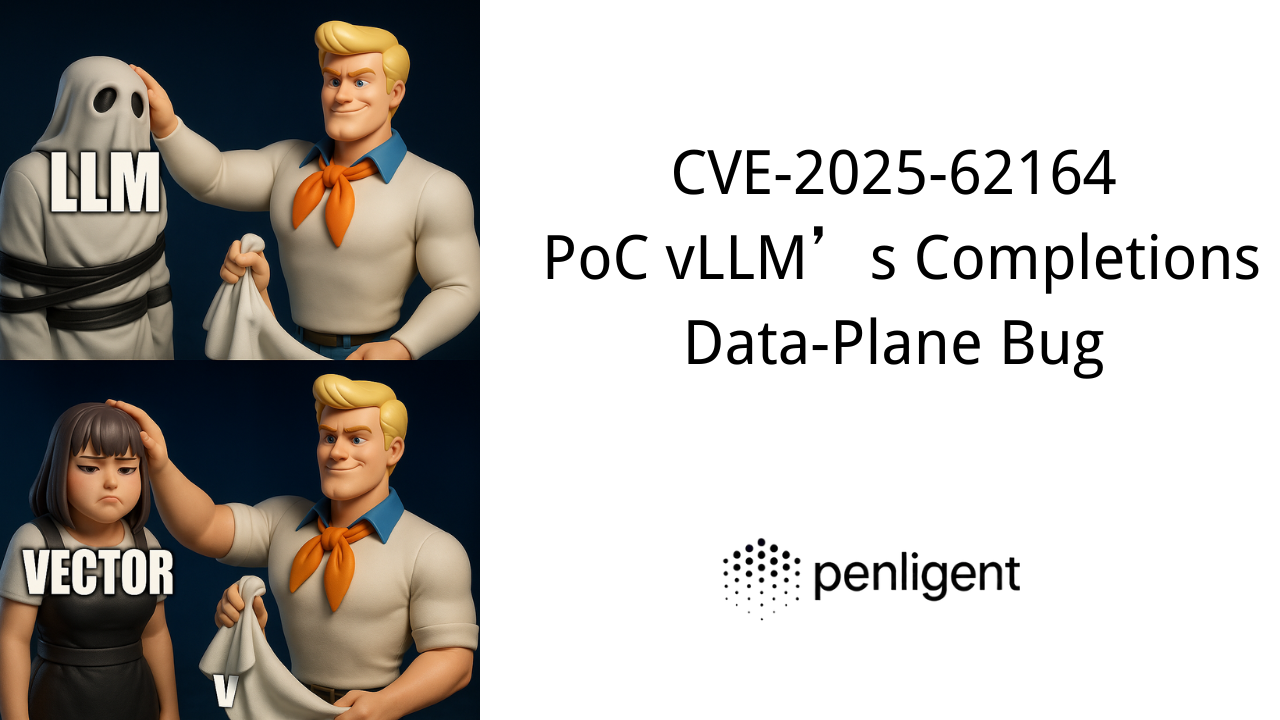Executive Summary: What Makes CVE-2025-64446 a Stop-Everything Vulnerability
CVE-2025-64446 is a critical Fortinet FortiWeb vulnerability disclosed on November 14, 2025. Fortinet classifies it as a relative path traversal flaw in the FortiWeb GUI, but the practical outcome is more severe: a remote, unauthenticated attacker can execute administrative commands, gain control of FortiWeb Manager, and access the WebSocket CLI—effectively full appliance takeover. NVD assigns a critical 9.x CVSS vector (AV:N/AC:L/PR:N/UI:N/C:H/I:H/A:H). In plain terms: if your FortiWeb management interface is reachable from the internet and you’re on a vulnerable build, this is a pre-auth RCE-class incident waiting to happen. NVD+2FortiGuard+2
This is not hypothetical. Fortinet and multiple threat-intelligence vendors confirm active exploitation in the wild, and CISA added CVE-2025-64446 to the Known Exploited Vulnerabilities (KEV) catalog within 24 hours. That combination—critical pre-auth impact + KEV listing—puts it in the same operational bucket as the most dangerous edge-device zero-days of the last few years. CISA+2CISA+2
From an SEO/attention standpoint, the highest-CTR co-occurring phrases for this CVE across top-ranking coverage are consistently “FortiWeb zero-day,” “exploited in the wild,” “path traversal RCE,” and “authentication bypass.” You see them repeated because they capture the real buyer’s intent: “Am I exposed, and am I already being targeted?” Greenbone+3Rapid7+3Tenable®+3 (inference based on SERP title density)

Why FortiWeb Bugs Become Front-Door Disasters
FortiWeb is a WAF/WAAP appliance positioned at the very edge of web infrastructure, typically in a DMZ or acting as a reverse-proxy in front of business-critical apps. That placement makes any management-plane compromise disproportionately valuable. Once an attacker owns FortiWeb, they can persist via new admin accounts, alter WAF policy to quietly “open lanes” into the protected application stack, or use the appliance as a high-leverage pivot point. Multiple incident analyses of CVE-2025-64446 show the attacker’s first objective is often to create a local FortiWeb administrator, then log in normally to take over. Rapid7+3Arctic Wolf+3Bitsight+3
This is why exploitation volume spiked so quickly after KEV inclusion: FortiWeb isn’t just another software node—it’s a policy enforcement chokepoint. A vulnerability here is a breach accelerator. Black Kite+1
Technical Core: Relative Path Traversal Meets Alternate-Path Auth Logic
Root Cause, Abstracted from Vendor and Field Reports
Fortinet’s PSIRT advisory describes CVE-2025-64446 as relative path traversal (CWE-23) in the FortiWeb GUI/API routing layer. The reporting consensus is that URL paths are not properly normalized and constrained before dispatching to handlers. By injecting traversal-style relative segments, an attacker can escape the intended /api/ routing context and reach a legacy CGI or management processor that does not enforce authentication correctly. FortiGuard+2NVD+2
Several independent analyses point out that the flaw also behaves like Authentication Bypass Using an Alternate Path (CWE-288): the “primary” route checks auth, but a semantically equivalent “alternate” route does not. That dual-classification matters operationally because it frames the issue as routing-semantic rather than “one bad endpoint.” Greenbone+2Black Kite+2
Real-World Exploitation Pattern (Without Weaponizable Detail)
Observed attacks follow a predictable chain: path confusion lands the request on an unauthenticated management handler, which then allows administrative actions such as creating a new privileged user or invoking system-level commands. Rapid7, Arctic Wolf, and Bitsight all documented exploitation consistent with pre-auth admin creation followed by normal UI login. The Hacker News+3Rapid7+3Arctic Wolf+3
The important mental model isn’t the specific payload, but the structure:
route escaping → unauthenticated handler → admin-plane capability → full appliance takeover.
Scope and Fix Versions
The affected builds span multiple FortiWeb branches. The table below aligns Fortinet PSIRT boundaries with NVD and CISA summaries. FortiGuard+2NVD+2
| Branch | Affected Versions | Fixed Versions (Vendor Guidance) | Severity |
|---|---|---|---|
| FortiWeb 8.0 | 8.0.0 – 8.0.1 | 8.0.2+ | Critical |
| FortiWeb 7.6 | 7.6.0 – 7.6.4 | 7.6.5+ | Critical |
| FortiWeb 7.4 | 7.4.0 – 7.4.9 | 7.4.10+ | Critical |
| FortiWeb 7.2 | 7.2.0 – 7.2.11 | 7.2.12+ | Critical |
| FortiWeb 7.0 | 7.0.0 – 7.0.11 | 7.0.12+ | Critical |
Given KEV status, patching is not a “next maintenance window” item—it’s a right-now emergency. CISA+1
Risk Confirmation Without Dangerous Probing
Step 1: Inventory Exposure and Version (Probe, Don’t Exploit)
Start with conservative probing to confirm whether FortiWeb management surfaces are reachable and what version you’re on. Avoid any traversal payloads on production.
# Identify FortiWeb presence and management exposure
curl -k -I https://<FORTIWEB_HOST>/ | head -n 20
# If you have admin access, verify firmware version in UI
# Then compare to the affected ranges above.
This alone lets you triage most risk, because the exploit is pre-auth and version-bounded. NVD+1
Step 2: Hunt for “Path Semantics + Admin Activity” in Logs
GreyNoise and Rapid7 both observed broad scanning with malformed management paths, and incident write-ups emphasize the creation of unexpected admin users. Translate that into two correlated log hypotheses:
- Unusual relative path tokens hitting /api/ or /cgi-bin/ management paths
- New local admin accounts or privilege escalations outside change windows
- WebSocket/CLI sessions established from non-admin IPs or odd hours
A simple SIEM query could look like:
SELECT *
FROM fortiweb_http_logs
WHERE url_path LIKE '%..%'
AND (url_path LIKE '%/api/%' OR url_path LIKE '%/cgi-bin/%')
AND response_status IN (200, 302)
AND timestamp > now() - interval '14 days';
If those signals co-occur in the same time window, treat the device as potentially compromised and follow incident-response playbooks. Rapid7+2GreyNoise+2

Why AI-Security Engineers Should Care Beyond Patch-and-Move-On
CVE-2025-64446 is a compact case study in two trends that matter to agentic security workflows.
First, it’s a classic route-semantic auth bypass. Traditional scanners key off known endpoints and signatures. Here, the exploitation hinges on requests landing in legacy handlers through path canonicalization gaps. That’s a natural fit for hybrid LLM workflows: let models reason about routing graphs and historical CGI surfaces, then use safe programmatic probes to validate hypotheses. Greenbone+1
Second, exploitation predated formal CVE assignment. Public PoC traffic was seen in honeypots in early October, while the CVE and vendor advisory landed mid-November. That “silent patching + delayed disclosure” window is exactly where automation typically fails—because there’s no stable fingerprint to match yet. Rapid7+2Arctic Wolf+2
So this CVE isn’t just an incident; it’s a reminder that modern edge-device zero-days demand reasoning-driven pre-disclosure defense, not only signature chase.
Controlled Validation
In zero-days like CVE-2025-64446, defenders often face a gap: you need evidence fast, but fully weaponized PoCs might be unreliable, unsafe to run on production, or simply not public yet. An agentic pentesting and validation platform such as Penligent can turn the research chain into an auditable engineering loop.
A practical approach is to have agents ingest authoritative sources (Fortinet PSIRT, CISA KEV, Rapid7 ETR, GreyNoise telemetry), distill affected versions and semantic attack surfaces, and then generate a minimal, controlled validation plan for an isolated lab clone of FortiWeb. That avoids reckless on-prod exploitation while still producing concrete proof of risk. GreyNoise+3FortiGuard+3CISA+3
Just as important, Penligent’s evidence-first reporting lets you package HTTP traces, configuration diffs, admin-account timelines, and remediation notes automatically. For AI-security teams that must justify emergency upgrades to ops leadership or regulators, that “reasoning → controlled verification → defensible report” pipeline is the part that actually saves time and arguments.


